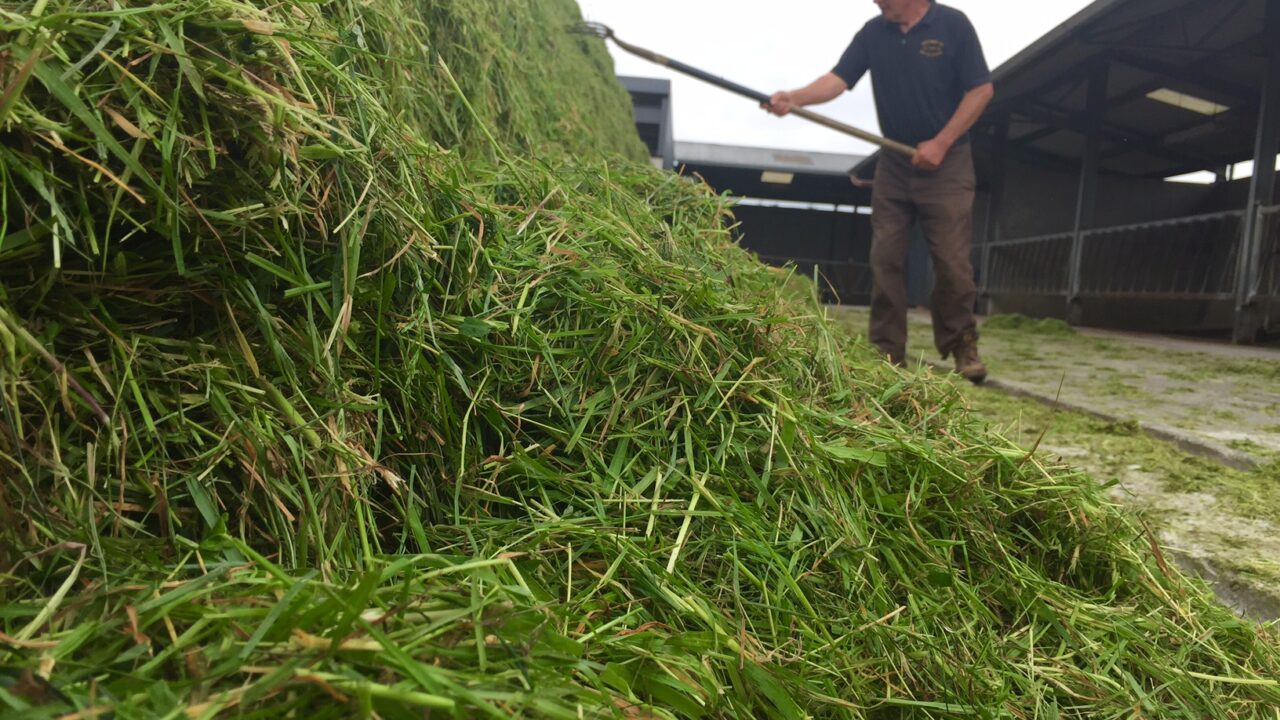Silage season may not be to the forefront of farmers minds, but steps taken over the next couple of weeks will have a positive impact on silage quality, according to Teagasc’s Drystock Advisor Joe Hand.
Hand said that farmers should aim to make a good quality silage, with a dry matter digestibility content of 72%+.
The Tipperary-based advisor said the quality of the grass silage is critical to achieve good growth rates from stock fed silage over the winter months.
1. Apply adequate fertiliser to silage swards
The Teagasc Advisor said that inadequate fertiliser levels can have a negative impact on the volume of silage produced from silage swards.
Many farmers are not spreading enough fertilisers on their silage ground, he said and some swards are lacking in Nitrogen (N), Phosphorous (P) and Potassium (K).
“Farmers should aim to spread enough N, P and K when they first close the paddock for silage,” he said.
Teagasc recommendations say that index 2 fields require three bags of 0:70:30 (N:P:K) and four bags of 27% Nitrogen if no slurry is available.
If 3,000 gallons of slurry is applied to the silage ground, three bags of 27:2.5:5 (N:P:K) will provide enough nutrients for the silage crop to grow.
Hand also said that fertiliser should be spread on silage ground in the March and at the latest before April 10.

2. Graze the silage sward in early spring
The Teagasc advisor said that farmers should aim to graze paddocks before closing them for silage.
He said that there has been a lot of grass growth on farms over the winter and by grazing the dead material before closing it will produce a better quality silage.
“The silage quality improves as there is more leaf in the sward at the time of cutting, ungrazed silage swards will have a lower dry matter digestibility content,” he said.

3. Close each silage field as soon as possible
Hand also said that farmers should aim to close silage fields as soon as possible. He said that farmers with dry land should close their silage swards by March 25 and at the latest April 1.
Closing silage swards will allow for adequate time for grass to grow and provide a good volume of high quality silage, he said.
4. Book your contractor for May
Hand said that first-cut silage has the optimum leaf to stem ration in late May and as a result farmers should aim to cut their silage during this period.
He said that the digestibility of the silage drops by about 0.5% DMD per day from a peak of 75% DMD for every day silage harvest is delayed during this period.
The Teagasc advisor also said by booking your contractor early allows them to have their machinery prepared and ready to cut the crop, which is important, especially if weather conditions are difficult.

5. Cover the pit properly
One of the most important steps in making good quality silage is to make sure that the bales are free from tares and the pit is adequately covered, he said.
Hand said that ensuring that the bales are wrapped properly and the pit is covered adequaltiy will reduce the amount of silage lost through spoilage.
However, he said that farmers have become increasingly good at cover their pit and wrapping bales over the past 20 years.


